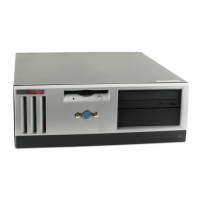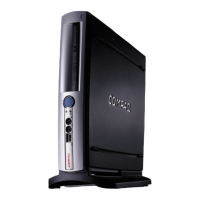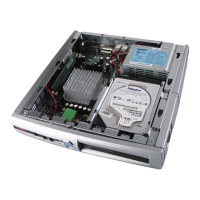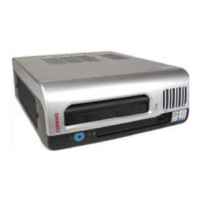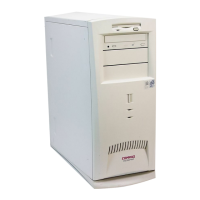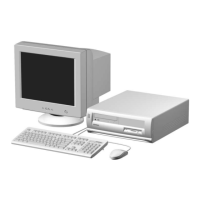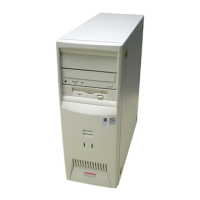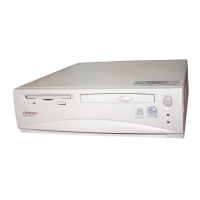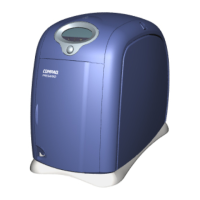System Features
Evo D310 Micro Desktop 25
Optical Drives
The Compaq Evo D310 Micro Desktop is available with a choice of optical drives:
•
CD-RW drive: 40X, 10X, 40X IDE (DLA and MyCD software from Veritas included)
•
DVD-ROM drive: 16X, 40X IDE (WinDVD MPEG2 decoding software from InterVideo included)
•
CD-ROM drive: 48X IDE.
These drives can also be purchased as accessories. Refer to
www.hp.com/go/pcaccessories
.
Features of the CD-RW Drive
•
Supported CD-ROM formats:
• CD-ROM Mode-1 data disc
•
CD-ROM Mode-2 data disc
• CD-ROM XA
•
CD Audio disc
•
Video CD
•
CD-I
•
CD-I Ready
• CD-I Bridge
• CD-WO
•
Enhanced Music CD (CD Plus)
• Photo CD Multi-session.
• Interface type: E-IDE/ATAPI.
CD-RW Technology
CD-RW drives use a technology known as optical phase-change. It does not use magnetic fields like the
phase-change technology used with magneto-optical technology. The media are generally distinguishable
from CD-R discs by their metallic grey color. The basic structure of the discs, however, is the same as a
CD-R disc but with significant detail differences. A CD-RW disc's phase-change medium consists of a
polycarbonate substrate, moulded with a spiral groove for servo guidance, absolute time information and
other data, on to which a stack (usually five layers) is deposited. The recording layer is sandwiched
between dielectric layers that draw excess heat from the phase-change layer during the writing process.
In place of the dye-based recording layer on a CD-R disc, CD-RW commonly uses a crystalline compound
made up of a mix of silver, indium, antimony and tellurium. This mix, when heated to a certain
temperature and then cooled becomes crystalline, but if heated to a higher temperature it becomes
amorphous when it cools down again. The crystalline areas allow the metallized layer to reflect the laser
light better while the non-crystalline portion absorbs the laser beam, and is therefore not reflected.
Description
Data Transfer Rate
(1 KB=2
10
byte=1,024 bytes)
(1 MB=2
20
byte=1,048,576 bytes)
Sustained Data Transfer Rate
Writing CD-RW - 40
✕
= 6,000 KB/s (Max)
Writing CD-R - 10
✕
= 1,500 KB/s (Max)
Reading - 40
✕
= 6,000 KB/s (Max)

